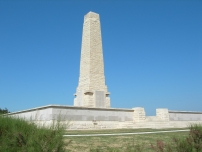| First Name: | Charles Henry | Last Name: | HORNSBY | |
|---|---|---|---|---|
| Date of Death: | 03/05/1915 | Lived/Born In: | Chelsea | |
| Rank: | Private | Unit: | Royal Munster Fusiliers1 | |
| Memorial Site: | Helles Memorial, Gallipoli | |||
Current Information:Born-Chelsea Enlisted-London
Gallipoli 1915 On 25 April, 1915, British, Australian and New Zealand forces landed on the Gallipoli peninsula. The plan was that these forces would soon defeat a demoralised Turkish army, knock Turkey out of the war, open up the Mediterranean to the Russian navy and threaten Austro-Hungary from the south. None of these things were achieved despite nine months of hard fighting in terrible conditions. It was a heroic failure. The 29th Division and the Royal Naval Division landed at five separate beaches around Cape Helles. Some were not defended, others were fiercely contested. Some ground was gained but within days the familiar pattern of trench warfare had set in. A similar pattern emerged further north where the ANZACS landed. The Turkish soldiers were much tougher fighters than had been given credit for and they were of course fighting an invasion of their homeland. The terrain, a series of steep rocky ridges and deep gullies made the fighting much more difficult and during the hot summer of 1915, the flies arrived in biblical proportions. Another seven British divisions were sent to Gallipoli during the summer but little or no progress was made. In the end, a new Commander was appointed and plans to evacuate the entire force were drawn up. By January 1916, all British, Australian and New Zealand forces had left Gallipoli, leaving only behind the dead, over 56,000 of them. During the night of 1st May, 1915 the Turks managed to break the British line astride Kirte Dere, a gulley running down the middle of the peninsular, where 1st Royal Munster Fusiliers and 1st Royal Dublin Fusiliers, 86 Brigade, 29th Division were holding the line. So severe had been the losses of these two battalions on 25th April, that they had been temporarily formed into a composite battalion, “The Dubsters”. The Turks managed to penetrate a section of their line but their success did not last long. A company of 2nd Royal Fusiliers, 86 Brigade moved up and helped regained the lost trench. The remnants of 1st Royal Munster Fusiliers were still holding these positions on 3rd May when Charles Hornsby was killed, probably by sniper fire. |
||||
| « Back to Search Results | ||||
| If you think any of the information shown here is incorrect, Click Here to submit your amends and comments | ||||




